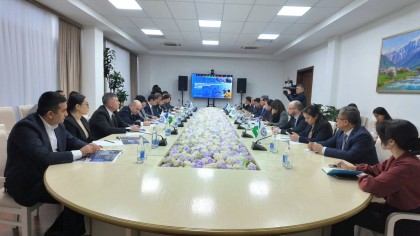In 1992, Tina Gibson was nearly 2 years old when a couple donated embryos that were frozen in a clinic in the Midwest. In February 2020, one of those embryos was implanted in Ms. Gibson, an elementary schoolteacher in Knoxville, Tenn., and in October, she gave birth to a 6-pound, 13-ounce baby. Ms. Gibson and her husband, Ben, named her Molly.
The birth broke the record for the longest-frozen embryo to result in a live birth. That record, according to the National Embryo Donation Center in Tennessee, was set in 2017, when Molly’s older sister, Emma, was born after an embryo from the same donor couple was implanted in Ms. Gibson.
Molly’s birth is the result of a process that began when an embryo was frozen on Oct. 14, 1992. It was thawed in February 2020, the longest time an embryo had been frozen before it led to a live birth, said Martha Earl, director of the University of Tennessee Preston Medical Library. She said she had researched medical journal articles and had “found no published case in a medical journal of a live birth” of an embryo that had been frozen more than 20 years.
Molly’s birth shows that there is not a limited length of time an embryo can be frozen, even though freezing techniques have changed significantly since the 1990s, said Dr. Jeffrey Keenan, director of the National Embryo Donation Center, a Christian organization that performed the transfers.
The birth is an exciting development that will allow fertility doctors to reassure prospective parents that an embryo frozen for years, even decades, will remain viable, said Dr. Mindy S. Christianson, the medical director at the Johns Hopkins Fertility Center.
“Patients often ask how long can embryos be frozen,” she said. “Often, the answer is, ‘We don’t really know.’ Now we can say with confidence there have been babies born from embryos that have been frozen for 27 years.”
Dr. Sigal Klipstein, director of the egg donor program at InVia Fertility Specialists in Chicago, said that the length of time an embryo spends frozen is not an important data point for fertility doctors.
“The issue is the quality of the embryo at the time of freezing,” she said. “If it’s a good quality embryo, we anticipate that it will remain a good quality embryo at the timing of the freezing and at the timing of the thaw.”
Ms. Gibson said she and her husband had decided to use donated embryos after seeing a news story about a woman who had tried to get pregnant the same way.
The Gibsons had struggled for five years to adopt a child, but the process was riddled with setbacks. They were hesitant to pursue in vitro fertilization because Ben, 36, has cystic fibrosis, and Tina, 29, learned she was a carrier. Ms. Gibson said they feared passing the condition on to their children.
When they began researching donor embryos at the donation center, they learned about the donor parents’ ages, their physical characteristics, their educational and medical backgrounds and even their hobbies. The ages of the embryos were not listed.
Ms. Gibson said she had been nervous about that at first but had felt better after Dr. Keenan told her it would make no difference in the babies’ health.
Dr. Keenan said his center had had nearly 1,000 live births from donated embryos, a process that is far less expensive than going through I.V.F.
After using the process to form their own families, biological parents with fertilized eggs left over have several options: donating them to others, discarding them, donating them for medical research or keeping them frozen indefinitely.
Dr. Christianson said that at her practice, she had seen an increase in the number of people donating embryos, a trend she believes has to do with the increase in embryos that people do not need for I.V.F.














